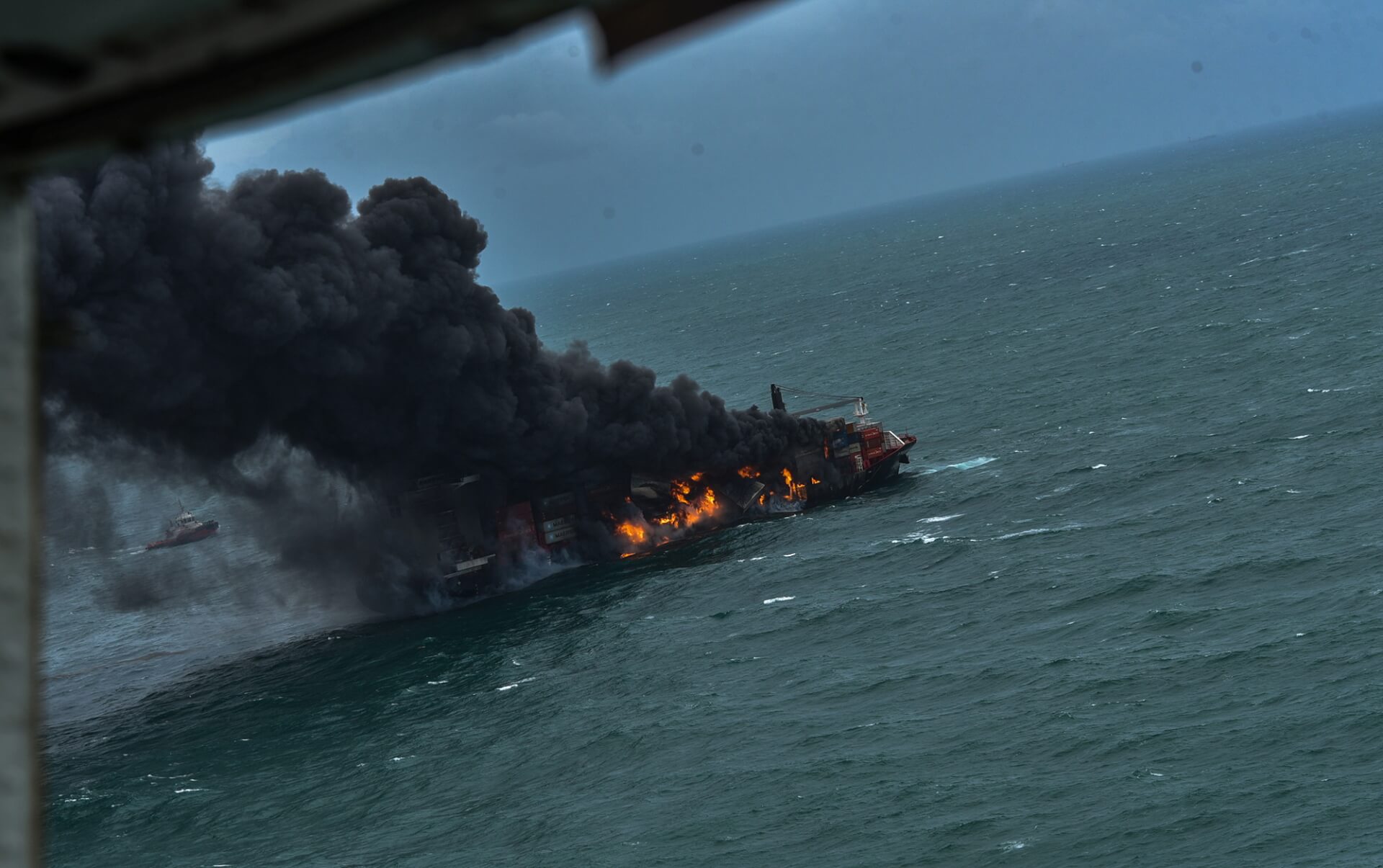Sri Lankan authorities began questioning the 25-member crew of the MV X-Press Pearl, a Singapore-registered ship that has been ablaze for the 12th straight day off the coasts of Sri Lanka. The crew completed their 12-day quarantine before being questioned by Sri Lankan criminal investigators. The authorities will be looking into the cause of the fire along with the ecological damage caused.
On May 20, a fire broke out on the cargo ship, which was headed for Colombo from Gujarat after visiting Qatar and Dubai. Following a short halt at Sri Lanka, it was scheduled to go to Malaysia and Singapore. On Tuesday, a rescue operation was successfully conducted, and all 25 crew members were brought to shore. The ship immediately raised concerns amongst authorities as it was carrying 25 tonnes of nitric acid, along with a large amount of raw materials made of plastic. However, the fire has largely been under control since Sunday. Moreover, according to the owners of the ship, there has been no damage caused to the fuel tanks, and it has not resulted in an oil spill.
The Sri Lankan Air Force, which was deployed to contain the fire, released fire dousing material over the ship. Furthermore, last week, the Indian Navy also dispatched ICG Vaibhav, ICG Dornier, and Tug Water Lilly to assist the Sri Lankan Navy’s operations. The Samudra Prahari, India’s special vessel for pollution response, also reached the cargo on Saturday. Speaking about the rescue operations, the Indian High Commission in Colombo said, “External fire-fighting using foam and boundary cooling by sea-water along the entire length of the vessel from either side is under progress, and continuous monitoring of vessel’s draught, list conditions and presence of hazardous and noxious substances overboard is being undertaken.”
According to the Marine Environment Protection Authority (MEPA), the captain of the ship has been aware of a nitric acid leak since May 11, which was even before the cargo ship entered Sri Lankan territorial waters. The authorities, in pursuance of the MEPA’s complaint, are looking to charge the owners and crew of the vessel.
The disaster also raised concern about its ecological damage, as tonnes of granules of microplastics, dead sea turtles, birds, and fish were found along the beaches of Negombo. To investigate the impact, Ajith Rohana, a spokesperson of the Sri Lankan police, said that authorities had sent samples of “polluted seawater and burnt debris.” The MEPA said that the incident resulted in “the worst beach pollution in [Sri Lankan] history.” which could, in turn, cause years of environmental damage. Moreover, it also warned that the emission of Nitrogen Dioxide could also result in acid rains, urging residents of the coastal area to avoid exposure to the rains in the coming days.
Last September, the New Diamond, a very large crude carrier (VLCC) chartered by the Indian Oil Corporation (IOC), caught fire off the east coast of Sri Lanka in the Indian Ocean. The tanker was reportedly carrying two million barrels of oil and was on its way from Kuwait to the Indian port, Paradip, where state-run IOC has a 300,000 barrel-per-day refinery. This came shortly after another such incident with the Japanese vessel MV Wakashio, which ran aground on the coast of Mauritius and spilt over 1,000 tons of oil into the ocean, damaging the islands lagoons, marine habitats, and beaches. Hence, with the rising number of incidents of fires on cargo ships resulting in environmental damage, an assessment must be done about the vessels’ abidance by safety protocols and registration requirements.
Sri Lanka Questions Crew as Cargo Ship Burns for 12th Straight Day
Sri Lankan authorities began questioning the crew of the Singapore-registered cargo ship as it continues to burn for the 12th day, causing one of the worst maritime disasters in history.
June 1, 2021

SOURCE: REUTERS
